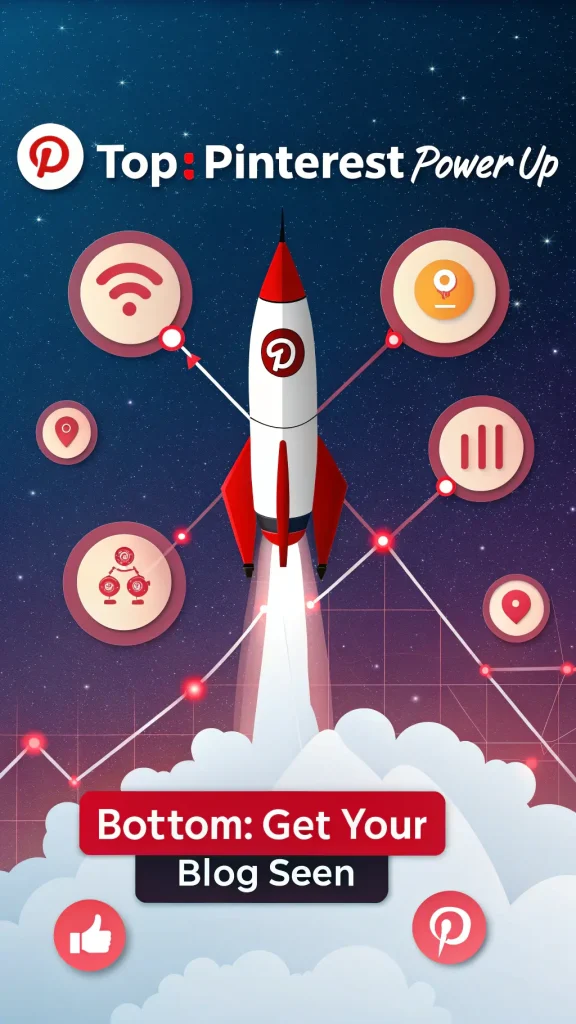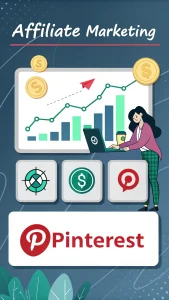Pinterest Power-Up

Pinterest Power-Up is a visual search engine, not just a social media platform. For bloggers, it’s a goldmine waiting to be tapped. It’s a place where people go to discover new ideas, products, and inspiration, making it the perfect avenue to drive massive traffic back to your blog. This comprehensive guide will equip you with everything you need to know to harness the power of Pinterest, from setting up your account to creating viral pins that get your blog seen by thousands.
Setting Up Your Pinterest Foundation for Success
Creating a Business Account (and Why It Matters)
A business account unlocks a suite of tools crucial for blog promotion. Unlike a personal account, a business account gives you access to valuable analytics, the ability to run ads, and rich pins, which enhance your pins with extra information. Setting one up is easy and free! Just head to pinterest.com/business/create/, follow the prompts, and be sure to claim your website. This verifies your ownership and builds trust with your audience.
Optimizing Your Profile for Maximum Visibility
Your profile is your first impression, so make it count! Choose a clear, professional profile picture that represents your brand. Select an eye-catching cover image showcasing your blog’s aesthetic. Your bio should be keyword-rich, clearly stating your niche and what you offer. Don’t forget to add a strong call to action, encouraging visitors to click through to your blog.
Setting Up Rich Pins (The Secret Weapon)
Rich pins are a game-changer. They add extra details to your pins, like article titles, descriptions, and author information, directly from your website. This not only makes your pins more attractive but also boosts their searchability. There are several types of rich pins, including article, product, recipe, and app pins. To enable them, you’ll need to add some code to your website, a process that varies depending on your platform, but Pinterest offers detailed guides to walk you through it. Rich pins elevate your pins and make them stand out in the crowded Pinterest feed.
Crafting Pinterest-Perfect Content
Understanding Your Target Audience on Pinterest
Before you start pinning, you need to know who you’re pinning for. Dive deep into understanding your audience’s interests, demographics, and what they’re searching for on Pinterest. Tools like Pinterest Analytics and audience insights can help you paint a clear picture of your ideal reader. Creating buyer personas can further refine your strategy, allowing you to tailor your pins to resonate with their specific needs and desires. This targeted approach will significantly improve your chances of attracting the right audience to your blog.
Keyword Research for Pinterest Success
Keywords are the foundation of Pinterest search. Start by using Pinterest’s search bar to see what people are searching for related to your niche. Use keyword research tools to uncover long-tail keywords – longer, more specific phrases that target niche interests. Incorporate these keywords naturally into your pin descriptions, board titles, and board descriptions to increase the visibility of your pins in search results.
Designing Eye-Catching Pins that Convert (with Examples)
Your pins need to stop the scroll. High-quality, vertical images are essential. The recommended aspect ratio is 2:3 or 1:2.7. Use design tools like Canva to create stunning visuals that incorporate your branding, clear text overlays with strong calls to action, and compelling imagery. Think about what would grab your ideal reader’s attention and experiment with different styles. Looking at successful pins in your niche can provide valuable inspiration.
Organizing Your Pinterest Presence
Creating Strategic Boards That Attract Followers
Organize your boards by topic and relevance to your blog. Use keywords in your board titles and descriptions to help users find them. Create a mix of broad and niche boards to cater to different interests within your audience. A well-organized Pinterest profile makes it easy for people to find what they’re looking for and encourages them to follow you.
Curating and Repinning High-Quality Content
Sharing valuable content from other users establishes you as a resource and keeps your boards active. A good rule of thumb is the 80/20 rule: 80% curated content, 20% your own. Find and follow relevant pinners in your niche and share their content strategically, always ensuring it aligns with your brand and audience.
Promoting Your Blog Posts on Pinterest
Creating Multiple Pins per Blog Post
One blog post deserves multiple pins. Create several different pin designs with varying visuals and keywords to reach a wider audience. A/B testing different pin designs and descriptions will help you identify what resonates best with your followers.
Scheduling Pins for Optimal Reach
Consistency is key on Pinterest. Using scheduling tools like Tailwind or Later allows you to schedule pins in advance, ensuring your content is distributed regularly. Research the best times to pin for your target audience to maximize visibility.
Joining Relevant Group Boards for Expanded Reach
Group boards are collaborative boards where multiple users can contribute pins. Joining relevant group boards exposes your content to a larger audience. Be sure to follow the group board guidelines and contribute high-quality pins.
Running Pinterest Ads (Optional but Powerful)
Pinterest Ads, or Promoted Pins, can significantly amplify your reach. They allow you to target specific demographics and interests, driving more traffic to your blog. While optional, they can be a powerful tool for accelerating your Pinterest marketing efforts.
Tracking Your Pinterest Performance and Making Adjustments
Using Pinterest Analytics to Measure Success
Pinterest Analytics is your best friend. Track key metrics like impressions, clicks, saves, and close-ups to understand which pins and boards are performing best. Analyze this data to identify areas for improvement and refine your strategy over time.
A/B Testing Your Pinterest Strategy
Continuously experiment with different pin designs, descriptions, scheduling strategies, and keywords. Analyze the results of your A/B tests and use the data to make informed decisions about your Pinterest marketing strategy.
Staying Up-to-Date with Pinterest Best Practices
Following Pinterest’s Community Guidelines
Always adhere to Pinterest’s community guidelines to avoid penalties and ensure your account remains in good standing. Avoid spammy tactics and respect copyright laws.
Keeping Up with Algorithm Changes
Pinterest’s algorithm is constantly evolving. Stay informed about updates and adapt your strategy accordingly to maintain optimal performance and continue driving traffic to your blog.
Frequently Asked Questions
Q: How often should I pin?
A: Consistency is key. Aim for several pins per day, spreading them out throughout the day. Using a scheduling tool can help maintain a consistent pinning schedule.
Q: What are the best image sizes for Pinterest?
A: The ideal aspect ratio is 2:3 or 1:2.7. Avoid using images that are too short or too wide.
Q: How do I find group boards to join?
A: Search for group boards related to your niche on Pinterest. You can also look for bloggers in your niche and see which group boards they participate in.
Q: How long does it take to see results on Pinterest?
A: Pinterest is a long-term game. It takes time to build a following and see significant traffic. Be patient and consistent with your strategy.
Q: Are Pinterest ads worth it?
A: Pinterest ads can be a valuable tool for reaching a wider audience and driving more traffic to your blog, especially if you have a specific product or service to promote.
Q: What is the best way to create eye-catching pins?
A: Use high-quality images, bold text overlays, and vibrant colors. Make sure your pins are visually appealing and easy to read.
Q: How do I track my Pinterest analytics?
A: Access Pinterest Analytics through your business account dashboard. You can track key metrics like impressions, clicks, and saves.
Q: What are rich pins and how do I get them?
A: Rich pins add extra details to your pins, like article titles and descriptions. To enable them, you need to add some code to your website. Pinterest provides detailed instructions on how to do this.
Pinterest is a powerful platform for driving traffic to your blog and building a strong online presence. By implementing the strategies outlined in this guide, you can unlock the full potential of Pinterest and watch your blog traffic soar. Start optimizing your profile, crafting compelling pins, and engaging with your audience today. Success on Pinterest takes time and consistency, but the rewards are well worth the effort.


